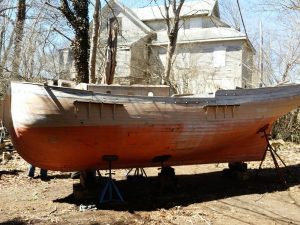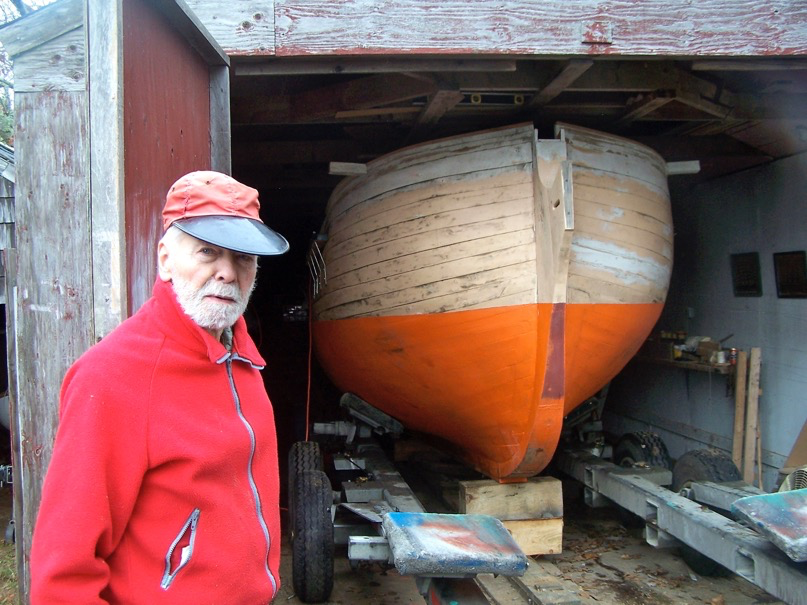
PHOTO COURTESY KURT UETZ
The Sultana in its new home behind the Woods Hole Historical Museum awaiting a three to five year project to complete the historic half-model of a 1760 schooner.
WOODS HOLE – Passersby might not notice the schooner tucked in behind the boat shop at the Woods Hole Historical Museum. It is just a hull, after all, with paint that is faded and chipped.
But they might comment on the odd bulbous shape of the hull—reminiscent of the Mayflower— and if they found out it was handmade they might take a moment to wonder at the time it took to steam and hand bend each of those oak planks.
Named the Sultana, it is a half-scale model of a 18th century boat, a Marblehead schooner—a massive project begun by one Fred Littleton of Chilmark, Martha’s Vineyard, who was 75 years old when he began the project.
Once they found that out, they might take a moment to wonder at the sheer audacity and the skill it took to complete the hull at all.
They might even chuckle at the series of events—the synchronicity—that a boat begun in a shed in Chilmark has ended up via a home in Centerville to a boat shop in Woods Hole, a place where a group of mostly retired fellows—including one who is 86—with a passion for history and boat building, will see it through to completion.
This is the story of a schooner, but more than that, it is the story of a man who built the hull of a schooner and the men who, in the coming years, painstakingly, skillfully and with a tip of the hat to the man who began it 16 years ago, will finish it.































